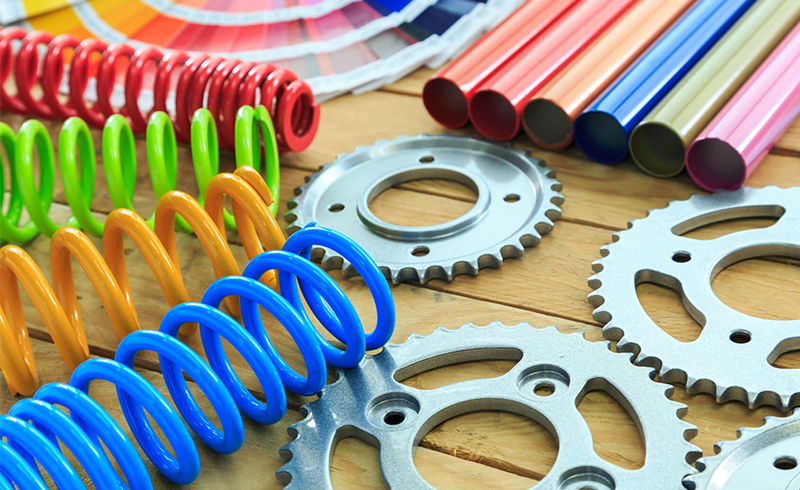Powder Coating Surface Treatment
2025-02-22Powder Coating is a surface treatment method in which plastic powder is sprayed on parts. The plastic powder is charged by high-voltage electrostatic equipment. Under the action of the electric field, the paint is sprayed on the surface of the workpiece. The powder will be evenly adsorbed on the surface of the workpiece to form a powder coating; and the powder coating will be leveled and solidified after high-temperature baking, and the plastic particles will melt into a dense final protective coating with different effects; firmly attached to the surface of the workpiece, plastic spray products are mostly used for indoor boxes, and the paint film presents a flat or matte effect. Plastic spray powder mainly includes acrylic powder, polyester powder, etc.
Advantages of Powder Coating:
No thinner is required, the construction is pollution-free to the environment and non-toxic to the human body; the coating has excellent appearance quality, strong adhesion and mechanical strength; the curing time of spraying construction is short; the coating has much higher corrosion resistance and wear resistance; no primer is required; the construction is simple, and the technical requirements for workers are low; the cost is lower than the painting process; some construction occasions have clearly stated that the electrostatic plastic spraying process must be used; the electrostatic powder spraying process will not cause the common flow phenomenon in the painting process.
Process flow
1. Pretreatment:
Purpose: Remove oil, dust and rust from the surface of the workpiece, and form a “phosphating layer” on the surface of the workpiece that is corrosion-resistant and can increase the adhesion of the spray coating.
Main process steps: degreasing, rust removal, phosphating, passivation. After pretreatment, the workpiece is not only free of oil, rust and dust on the surface, but also forms a uniform and rough gray phosphating film that is not easy to rust on the original silver-white and shiny surface, which can both prevent rust and increase the adhesion of the spray coating.
2. Electrostatic spraying
Purpose: Spray the powder coating evenly on the surface of the workpiece. Special workpieces (including positions that are prone to electrostatic shielding) should be sprayed with a high-performance electrostatic spraying machine.
Process steps:
Use the principle of electrostatic adsorption to evenly spray a layer of powder coating on the surface of the workpiece;
The fallen powder is recovered through the recovery system and can be reused after sieving.
3. High temperature curing
Purpose: Heat the powder coating on the surface of the workpiece to the specified temperature and keep it warm for a corresponding time to make it melt, level and solidify, so as to obtain the desired surface effect of the workpiece.
Process steps: Push the sprayed workpiece into the curing furnace, heat it to the predetermined temperature (generally 185 degrees), and keep it warm for a corresponding time (15 minutes); open the furnace, take it out and cool it to get the finished product. Generally, the heating temperature and insulation time are different for different workpieces.
4. Out-of-furnace cooling
Out-of-furnace cooling is a process of cooling the result of the spraying process to return it to normal temperature.
5. Decorative treatment
Purpose: Make the workpiece after electrostatic spraying achieve a special appearance effect such as: various wood grains, patterns, gloss enhancement, etc.
